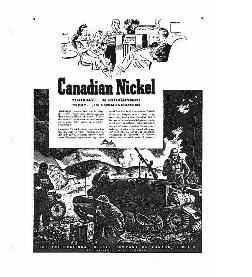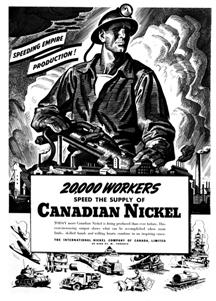Finland’s Strategic Nickel Deposits
In the 1930s, Inco had invested several million dollars developing valuable nickel deposits in the Petsamo district of northern Finland, close to the Russian border. At the outbreak of war events in the region unfolded with lightning speed. The Soviets invaded Finland and annexed the nickel mines in March 1940. Germany invaded Russia in 1941 and the Finns recaptured the nickel mines which were immediately put under German control.
The British wanted Inco Limited to keep operating the mines even though production would be sold to the Germans. They were hoping that Inco could slow down development and provide the necessary intelligence for nickel shipments that the British navy could destroy. The Mackenzie King government in Ottawa steadfastly refused to co-operate with this plan. Their big fear was the negative public reaction if it was discovered that a Canadian company was helping send vital nickel to the enemy.
During the First World War some Sudbury nickel had been shipped to the Germans via a neutral United States. The “Deutschland” incident caused a huge uproar in Canada and Prime Minister King was adamant that a similar event would not happen. Inco was caught in the middle but agreed to abide with the Canadian government even though its concession in Finland would ultimately be lost.































